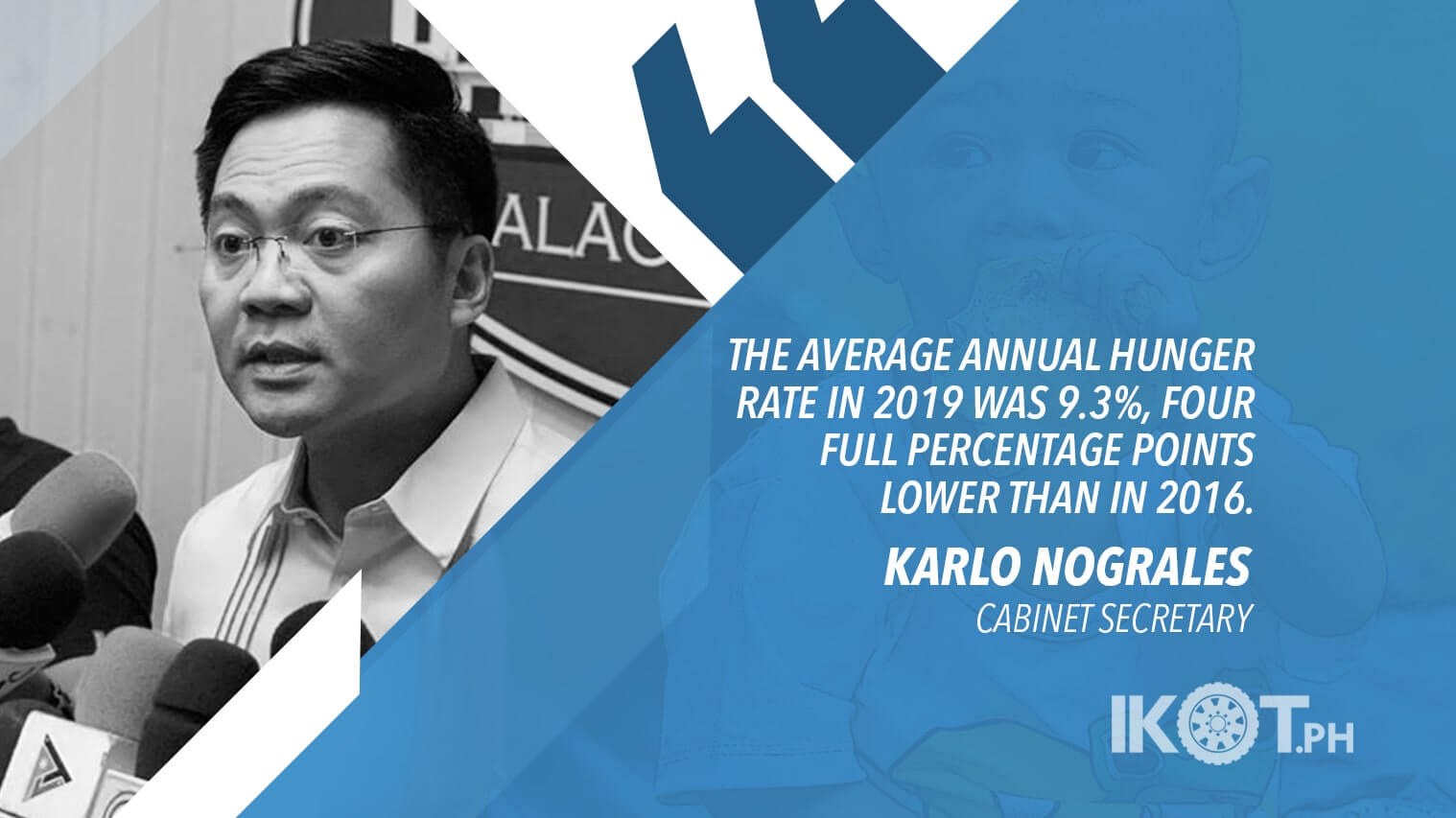With the annual average hunger rate at its lowest since 2003, the Duterte administration is committed to building on the progress it has made in reducing hunger with the initial roll out of its Enhanced Partnership Against Hunger and Poverty (EPAHP) in 32 provinces this year.
This was revealed by Cabinet Secretary Karlo Nograles––recently designated Chairperson of the government’s Interagency Task Force on Zero Hunger––who on Monday said that the administration was encouraged by the latest Social Weather Stations (SWS) survey that showed that the annual average hunger rate had dropped by 4 percent in the three and a half years in office of President Rodrigo Duterte.
The SWS survey shows that the annual average hunger rate has dropped every year since 2016
“The average annual hunger rate in 2019 was 9.3%, four full percentage points lower than in 2016, when it was at 13.3%. In absolute terms that is around 700,000 fewer families,” explained the Palace official.
“There is a tendency sometimes to look at the numbers and the data and forget that these figures represent families––that these figures represent our countrymen, who are saying that they do not have enough to eat,” explained the former legislator from Davao.
“The data tells us that while our programs have helped curb hunger, they also say that we have 2 million families we need to reach out to if we want to say #GoodbyeGutom––and that is what we want to do with EPAHP.”
Nograles said that for this year, EPAHP will be implemented in 32 provinces; eight provinces in Luzon, nine provinces in Visayas, 12 provinces in Mindanao, and three provinces in the Bangsamoro Autonomous Region in Muslim Mindanao (BARMM).
To be covered by EPAHP are provinces of Apayao, Camarines Sur, Catanduanes, Masbate, Nueva Ecija, Pangasinan, Sorsogon, and Quezon in Luzon; Cebu, Eastern Samar, Iloilo, Leyte, Negros Occidental, Negros Oriental, Northern Samar, Siquijor, and Western Samar in Visayas; Agusan Del Sur, Bukidnon, Davao Del Sur, Davao Occidental, Lanao Del Norte, North Cotabato, Sarangani, South Cotabato, Surigao Del Sur, Sultan Kudarat, Zamboanga Del Norte, and Zamboanga Del Sur in Mindanao; and Lanao Del Sure, Maguindanao, and Sulu in the BARMM.
Nograles said that for this year, EPAHP will be implemented in 32 provinces
EPAHP aims to help mitigate hunger, ensure food and nutrition security, and reduce poverty in urban and rural communities, including marginalized communities.
According to Nograles, the Zero Hunger Task Force will spearhead the EPAHP initiative “and work hand-in-hand so that government anti-hunger programs are rationalized, reconciled, and harmonized as part of a whole-of-nation approach to eradicate hunger.”
The SWS survey shows that the annual average hunger rate has dropped every year since 2016. In 2016, it was 13.3%; in 2017, it hit 12.3%, followed by 10.8% in 2018, and 9.3% in 2019.
The annual average hunger rate is at its lowest point since 2003, when it was 7.0%, and hit record-highs in 2011 and 2012 at 19.9%.

